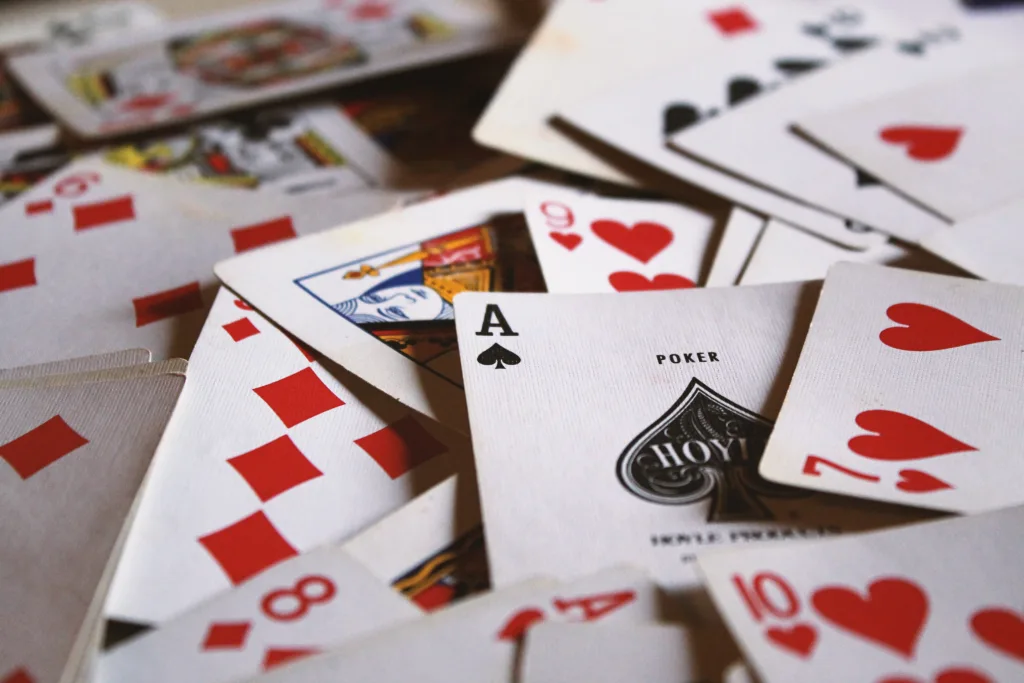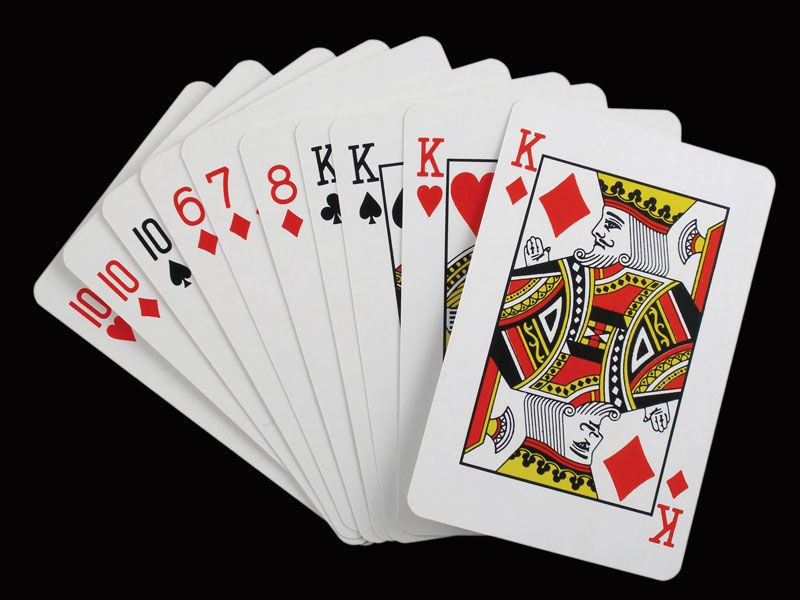Rummy and gin rummy are two popular variants of the classic rummy card game. While both games share similarities, they also have distinct differences that set them apart.
The main difference between rummy and gin rummy is the number of cards dealt to each player at the start of the game. In rummy, players are dealt 13 cards, while in gin rummy, players are dealt 10 cards. This difference affects the gameplay and strategy of the two games.
In rummy, the objective is to form valid sets and sequences with the 13 cards in hand. A set is a group of three or four cards of the same rank, while a sequence is a group of three or more cards of the same suit in consecutive order. The game ends when a player successfully forms valid sets and sequences, and declares their hand by discarding one card on the discard pile.
In gin rummy, the objective is to form valid sets and sequences with the 10 cards in hand and to have as little deadwood as possible. Deadwood refers to any cards in hand that are not part of a set or sequence. The game ends when a player successfully forms valid sets and sequences and then knocks, or when there are no cards left in the stock pile to draw from.
Another difference between rummy and gin rummy is the scoring system. In rummy, the game is scored based on the value of the cards left in the hand of the losing player. Face cards are worth 10 points each, while all othr cards are worth their face value. In gin rummy, the game is scored based on the difference in points between the two players. The winner receives points equal to the difference in deadwood points between the two players.
While rummy and gin rummy share similarities in terms of forming valid sets and sequences, the differences in gameplay, strategy, and scoring make each game unique. Both games have enjoyed widespread popularity as social and gambling games, and continue to be widely played today. Whether you prefer the challenge of forming sets and sequences with 13 cards or the strategy of minimizing deadwood with 10 cards, both rummy and gin rummy offer hours of fun and entertainment for players of all skill levels.
Is Gin And Rummy The Same Game?
Gin rummy and rummy are not the same game. While both games are played with cards and involve forming melds or sets of cards, there are several key differences between them.
In rummy, the objective is to be the first player to get rid of all their cards by forming melds of thre or more cards of the same rank or run. In contrast, gin rummy is played over several hands and the objective is to score points by forming melds of three or more cards of the same rank or sequence, with the remaining cards in the player’s hand forming unmatched cards called deadwood.
Another key difference is that in gin rummy, players are allowed to take cards from the discard pile if they can use them to form melds, whereas in rummy, players can only draw from the stock pile or take the top card from the discard pile.
While both games share similarities, they are distinct card games with different rules and objectives.

Is Gin Rummy 7 Or 10 Cards?
Gin Rummy is typically played with a 52-card deck and each player is dealt 10 cards at the start of the game. Therefore, Gin Rummy is a card game that is played with 10 cards. It is important to note that the number of cards dealt can vary depending on the specific rules being followed or the preferences of the players involved. However, in the traditional version of Gin Rummy, 10 cards are dealt to each player.
Why Is It Called Gin Rummy?
Gin Rummy is called so becase the game’s parent game was named Rum, and Gin is another alcoholic drink that was popular at that time. The game was invented in 1909 by Elwood T. Baker, a New York resident, and it quickly became the most played two-hand card game. The game is played with a standard deck of 52 cards, and the objective is to form sets or runs of cards in your hand. The word “gin” in the name does not refer to the alcoholic drink, but rather to the term “gin” as used in the game of poker, meaning to get a hand that is worth zero points. Gin Rummy is a fun and challenging game that has stood the test of time and is still enjoyed by players of all ages and skill levels.
What Are The Basic Rules Of Rummy?
Rummy is a popular card game that is played with a standard deck of 52 cards. The game is played with 2 to 6 players and the objective is to arrange the cards in valid sets and sequences. Here are the basic rules of rummy:
1. The game begins with the dealer dealing 13 cards to each player.
2. The first card from the deck is placed face up on the table to form the discard pile and the remaining cards are placed face down to form the stock pile.
3. The player to the left of the dealer starts the game and the turn passes clockwise.
4. The player can either pick a card from the stock pile or the top card from the discard pile.
5. The player must then discard one card from their hand onto the discard pile.
6. The objective is to form sets and sequences with the cards in your hand. A set is a group of 3 or 4 cards of the same rank but different suits. A sequence is a group of 3 or more cards of the same suit in consecutive order.
7. A pure sequence is a sequence without any joker cards. At least one pure sequence is required to declare a valid rummy.
8. If a player has formed sets and sequences with all 13 cards, they can declare rummy and win the game.
9. If a player cannot form any sets or sequences, they can drop out of the game by discarding one card and forfeiting their turn.
10. The game continues util one player declares rummy or the stock pile runs out of cards. In the latter case, the game is considered a draw.
The basic rules of rummy involve forming valid sets and sequences with the cards in your hand, and the game continues until one player declares rummy or the stock pile runs out of cards.

Conclusion
Both rummy and gin rummy are popular card games that have been enjoyed for decades by players all over the world. While they share some similarities in terms of gameplay and objective, they also have distinct differences that make each game unique. Rummy involves players collecting sets and sequences of cards, while gin rummy requires players to form melds and have as little deadwood as possible. Additionally, gin rummy has a smaller deck and different scoring system compared to rummy. Ultimately, the choice beteen these two games will depend on personal preference and playing style. Whether you are a fan of rummy or gin rummy, both games offer endless hours of entertainment and strategic gameplay.
